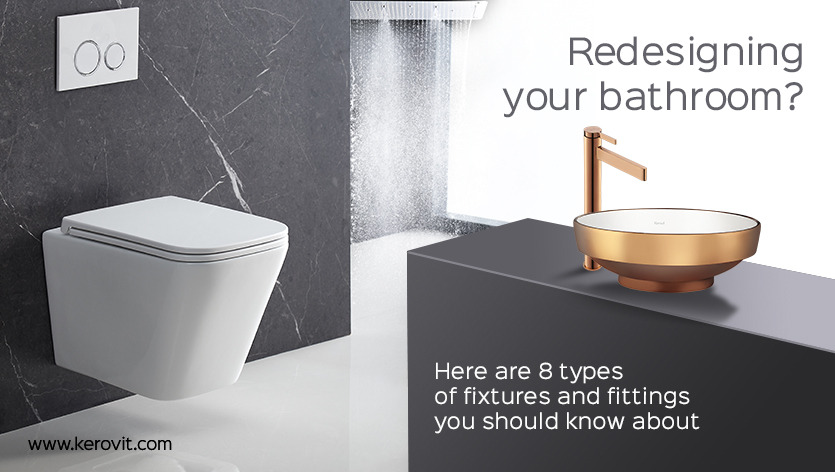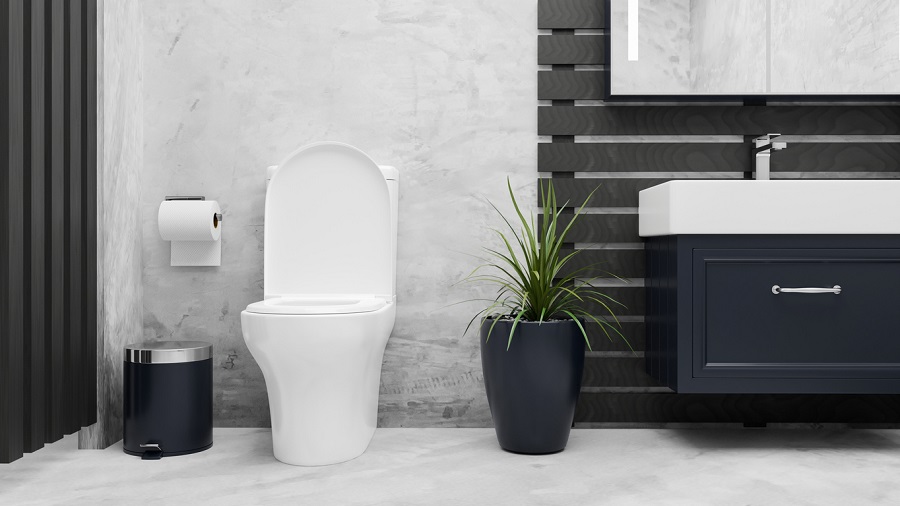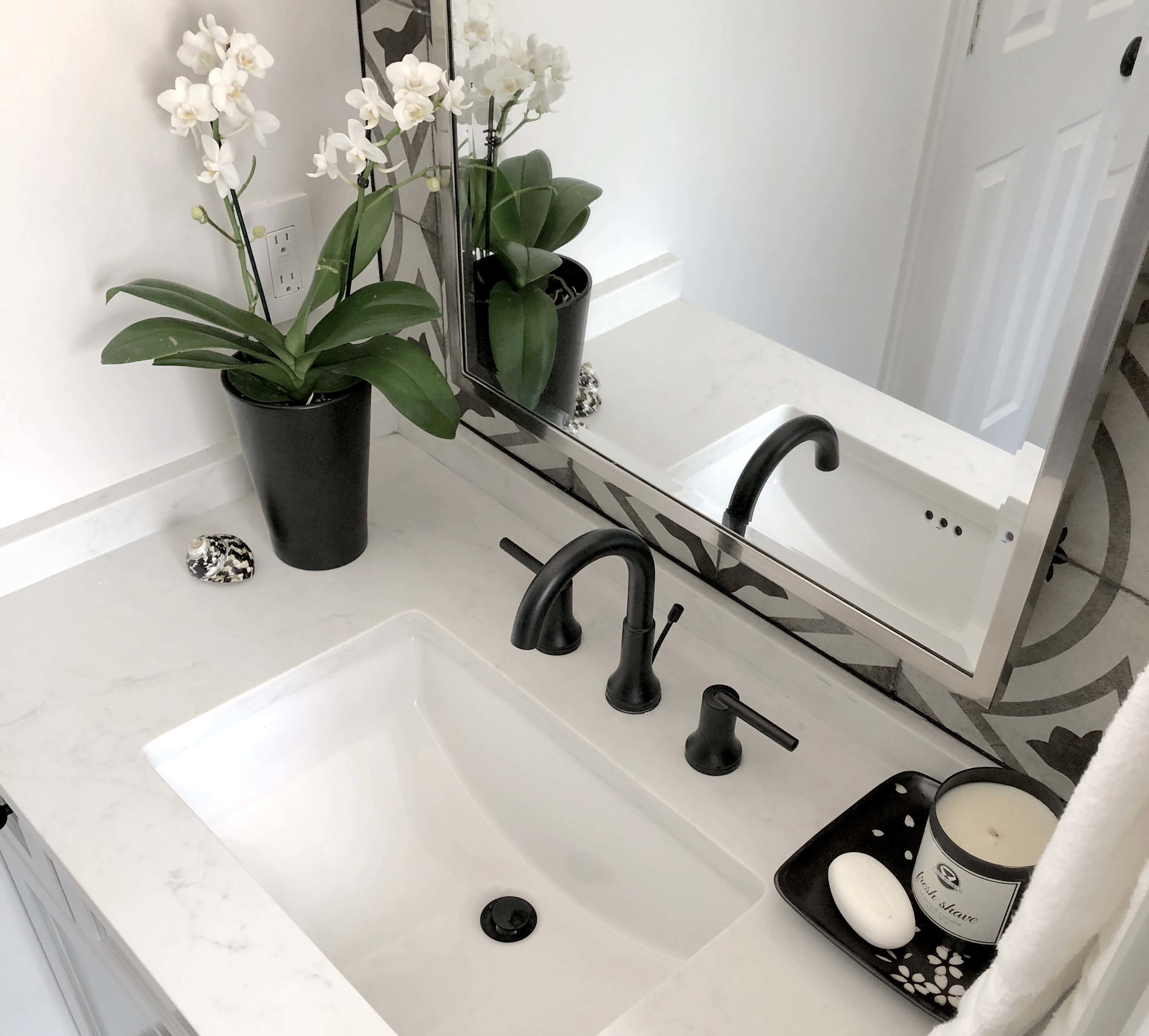Bathroom Fixture Design Trends: Design House Bathroom Fixtures
Bathroom fixture design is constantly evolving, reflecting changing tastes and technological advancements. Today’s trends showcase a blend of timeless elegance and cutting-edge innovation, with a focus on functionality, sustainability, and personalized aesthetics.
Styles and Materials
The influence of various design aesthetics is evident in bathroom fixture trends. Minimalist design emphasizes clean lines, simple forms, and a streamlined aesthetic. Contemporary fixtures often feature geometric shapes, bold colors, and innovative materials. Traditional designs, on the other hand, draw inspiration from classic styles, with intricate details, ornate finishes, and a sense of timelessness.
- Minimalist: Minimalist bathroom fixtures prioritize functionality and simplicity. They typically feature sleek, geometric shapes, muted colors, and a focus on clean lines. Common materials include brushed nickel, stainless steel, and matte black finishes. Examples include wall-mounted faucets with minimalist handles, rectangular sinks, and streamlined showerheads.
- Contemporary: Contemporary bathroom fixtures embrace modern design principles, incorporating innovative materials and bold aesthetics. They often feature geometric shapes, unexpected textures, and a blend of natural and industrial elements. Materials like porcelain, glass, and metal are popular choices, with finishes ranging from polished chrome to matte black. Examples include freestanding bathtubs with unique shapes, waterfall faucets, and shower systems with multiple spray patterns.
- Traditional: Traditional bathroom fixtures draw inspiration from classic design styles, emphasizing elegance, craftsmanship, and timeless appeal. They often feature ornate details, intricate carvings, and rich finishes. Materials like brass, bronze, and porcelain are common, with finishes like polished brass, oil-rubbed bronze, and white porcelain. Examples include clawfoot bathtubs, pedestal sinks, and faucets with cross handles.
Finishes
Finishes play a crucial role in defining the overall aesthetic of bathroom fixtures.
- Matte Black: Matte black finishes offer a modern and sophisticated look, adding a touch of drama to the bathroom space. They are particularly popular in minimalist and contemporary designs.
- Brushed Nickel: Brushed nickel finishes provide a warm and elegant look, complementing both traditional and contemporary styles. They are known for their durability and resistance to fingerprints.
- Polished Chrome: Polished chrome finishes are a classic choice, offering a bright and reflective surface. They are well-suited for traditional and contemporary designs.
- Oil-Rubbed Bronze: Oil-rubbed bronze finishes create a warm and rustic look, adding a touch of elegance to traditional bathrooms. They are known for their rich patina and depth of color.
Emerging Trends in Technology
Technology is transforming the bathroom fixture landscape, with smart features enhancing functionality and user experience.
- Smart Faucets: Smart faucets offer a range of features, including touchless activation, temperature control, and water flow regulation. They can be controlled via voice commands or smartphone apps, providing convenience and efficiency.
- Touchless Controls: Touchless controls are becoming increasingly popular in bathrooms, offering a hygienic and convenient way to operate fixtures. They use sensors to detect hand movement, eliminating the need for physical contact.
- Integrated Lighting: Integrated lighting is being incorporated into bathroom fixtures, creating a seamless and sophisticated look. Examples include mirrors with built-in LED lights, showerheads with embedded lighting, and faucets with illuminated handles.
Types of Bathroom Fixtures

Bathroom fixtures are the essential components that make up a functional and aesthetically pleasing bathroom space. They include sinks, toilets, showers, bathtubs, and faucets, each serving a specific purpose and contributing to the overall bathroom experience. The choice of fixtures depends on individual preferences, budget, and the size and style of the bathroom.
Sinks
Sinks are the primary fixture for handwashing and other hygiene tasks. They come in a wide range of styles, sizes, and materials to suit different bathroom designs.
- Pedestal Sinks: These sinks are known for their classic elegance and space-saving design. They are typically mounted on a pedestal base, leaving the floor underneath open. Pedestal sinks are often found in smaller bathrooms or powder rooms.
- Wall-Mounted Sinks: Wall-mounted sinks offer a modern and minimalist look, with the sink attached directly to the wall. They create a sense of spaciousness and are particularly well-suited for smaller bathrooms.
- Vanity Sinks: Vanity sinks are the most common type of sink and are integrated into a vanity cabinet. They provide storage space for toiletries and other bathroom essentials.
- Vessel Sinks: Vessel sinks are characterized by their distinctive bowl-like design, often placed on a countertop. They offer a unique and stylish focal point for the bathroom.
- Undermount Sinks: Undermount sinks are installed below the countertop, creating a seamless and elegant look. They are popular for their clean lines and ease of cleaning.
Toilets
Toilets are essential for sanitation and hygiene. They are available in various styles, flush mechanisms, and water-saving features.
- One-Piece Toilets: One-piece toilets are designed with a single, seamless unit, eliminating the need for separate tank and bowl components. This design offers a sleek look and is easier to clean.
- Two-Piece Toilets: Two-piece toilets consist of a separate tank and bowl, offering greater flexibility in installation and repair. They are typically more affordable than one-piece toilets.
- Elongated Toilets: Elongated toilets feature an elongated bowl, providing more seating space and comfort. They are particularly popular for their user-friendliness.
- Round Front Toilets: Round front toilets have a more compact bowl design, making them suitable for smaller bathrooms.
- Dual Flush Toilets: Dual flush toilets offer two flush options, a full flush for solid waste and a half flush for liquid waste, helping to conserve water.
Showers
Showers are a popular choice for bathing and are available in various styles, sizes, and functionalities.
- Walk-in Showers: Walk-in showers are designed for easy access and are ideal for people with mobility issues. They typically feature a curbless entry and a spacious shower area.
- Tub and Shower Combinations: These fixtures combine a bathtub and shower in a single unit, offering flexibility and space-saving advantages. They are often found in smaller bathrooms.
- Shower Stalls: Shower stalls are enclosed shower units with walls and a door. They offer privacy and can be customized with various showerheads and accessories.
Bathtubs
Bathtubs provide a relaxing and rejuvenating experience. They come in various shapes, sizes, and materials, catering to different preferences and bathroom styles.
- Soaking Tubs: Soaking tubs are designed for deep immersion and relaxation. They are typically larger and wider than other bathtub styles.
- Whirlpool Tubs: Whirlpool tubs feature jets that create a massaging effect, providing a therapeutic bathing experience.
- Clawfoot Tubs: Clawfoot tubs are known for their elegant and traditional design. They are typically freestanding and have claw-shaped feet.
- Drop-In Tubs: Drop-in tubs are installed within a surrounding deck, offering a sleek and modern look.
Faucets
Faucets are essential for controlling water flow to sinks, showers, and bathtubs. They are available in a wide range of styles, finishes, and functionalities.
- Single-Handle Faucets: Single-handle faucets feature a single lever for controlling both water temperature and flow. They are easy to use and offer precise control.
- Two-Handle Faucets: Two-handle faucets have separate handles for controlling hot and cold water flow. They offer a traditional look and are known for their durability.
- Touchless Faucets: Touchless faucets use sensors to activate water flow, providing a hands-free and hygienic experience. They are particularly popular in commercial settings and kitchens.
- Pull-Down Faucets: Pull-down faucets feature a retractable spray head that can be pulled out for easy cleaning and rinsing.
Bathroom Fixture Installation and Maintenance

Installing and maintaining bathroom fixtures properly ensures their longevity and optimal performance, enhancing the functionality and aesthetics of your bathroom. This involves understanding the installation process, implementing proper maintenance practices, and recognizing the importance of water pressure and drainage.
Bathroom Fixture Installation
Installing bathroom fixtures requires careful planning, precise measurements, and a basic understanding of plumbing principles. The following steps provide a general overview of the installation process for common bathroom fixtures:
Sink Installation
- Prepare the area: Clear the surrounding space, turn off the water supply, and remove the old sink if necessary.
- Install the sink base: Secure the sink base to the countertop or vanity using appropriate fasteners.
- Connect the drain: Attach the drain pipe to the sink and secure it to the drain line.
- Connect the water supply: Connect the water supply lines to the sink’s faucets and ensure they are properly sealed.
- Test for leaks: Turn on the water supply and check for leaks at all connections.
Toilet Installation
- Prepare the area: Clear the surrounding space and turn off the water supply to the toilet.
- Remove the old toilet: Disconnect the water supply line and remove the old toilet from the floor.
- Install the new toilet: Position the new toilet on the floor and secure it to the floor using bolts and a wax ring.
- Connect the water supply: Connect the water supply line to the toilet’s fill valve.
- Test for leaks: Turn on the water supply and check for leaks at all connections.
Shower Installation
- Prepare the area: Clear the surrounding space, turn off the water supply, and remove the old shower head and shower arm.
- Install the shower arm: Attach the shower arm to the shower pipe and secure it with a pipe wrench.
- Install the shower head: Attach the shower head to the shower arm and tighten it securely.
- Connect the water supply: Connect the water supply lines to the shower arm and ensure they are properly sealed.
- Test for leaks: Turn on the water supply and check for leaks at all connections.
Bathtub Installation
- Prepare the area: Clear the surrounding space, turn off the water supply, and remove the old bathtub if necessary.
- Install the bathtub base: Position the bathtub base on the floor and level it using shims.
- Connect the drain: Attach the drain pipe to the bathtub and secure it to the drain line.
- Connect the water supply: Connect the water supply lines to the bathtub’s faucets and ensure they are properly sealed.
- Test for leaks: Turn on the water supply and check for leaks at all connections.
Bathroom Fixture Maintenance
Regular maintenance ensures optimal performance and extends the lifespan of bathroom fixtures. Here are some essential maintenance tips:
Cleaning
- Regular cleaning: Clean bathroom fixtures regularly to remove dirt, grime, and mineral deposits.
- Avoid harsh chemicals: Use mild cleaning agents and avoid harsh chemicals that can damage the finish.
- Clean showerheads: Clean showerheads regularly to remove mineral deposits that can restrict water flow.
- Clean faucet aerators: Clean faucet aerators to remove mineral deposits that can affect water pressure.
Water Pressure and Drainage
- Check water pressure: Ensure proper water pressure for optimal fixture performance.
- Maintain drainage: Regularly clean drain lines to prevent clogs and ensure proper drainage.
- Address leaks promptly: Repair any leaks promptly to prevent water damage and ensure efficiency.
Importance of Water Pressure and Drainage, Design house bathroom fixtures
Proper water pressure and drainage are crucial for optimal bathroom fixture performance. Inadequate water pressure can result in weak water flow, while poor drainage can lead to clogs and backups.
Water Pressure
- Ideal water pressure: The ideal water pressure for bathroom fixtures is between 40 and 60 PSI (pounds per square inch).
- Low water pressure: Low water pressure can cause weak water flow, making it difficult to use fixtures effectively.
- High water pressure: High water pressure can damage fixtures and lead to leaks.
Drainage
- Proper drainage: Proper drainage ensures that wastewater is efficiently removed from the bathroom.
- Clogged drains: Clogged drains can cause slow drainage and water backups.
- Maintaining drainage: Regular cleaning and maintenance of drain lines are essential for preventing clogs.
Design house bathroom fixtures are an essential element of any bathroom, providing both functionality and aesthetic appeal. When considering bathroom fixtures, it’s crucial to think about the overall design style you’re aiming for. Modern architecture often emphasizes clean lines, minimalist designs, and a focus on functionality, as outlined in this guide to modern architecture bathroom design.
Design house bathroom fixtures can seamlessly integrate with this aesthetic, offering sleek faucets, minimalist showerheads, and contemporary vanities that complement the modern architecture style.
Design houses often showcase the latest bathroom fixtures, from sleek faucets to minimalist showerheads. But beyond the functional, they also highlight the aesthetic, like incorporating a modern bathroom almirah design for storage and visual appeal. These almirahs, with their clean lines and innovative materials, seamlessly blend with the overall bathroom design, reflecting the same commitment to style and functionality found in the fixtures themselves.
